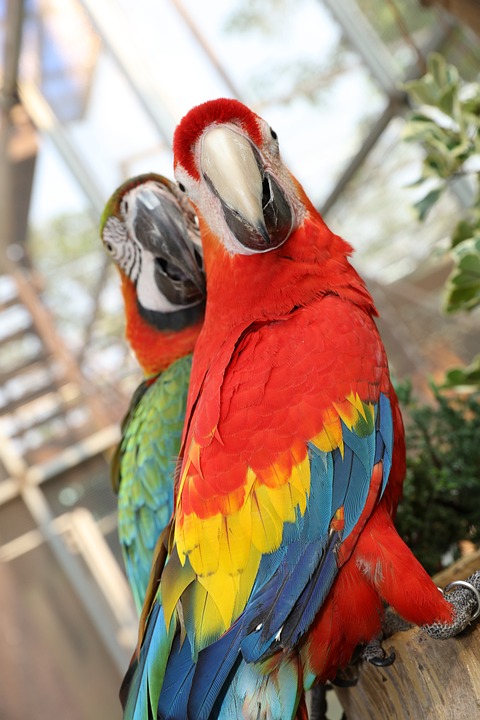Parrots are known for their intelligence, sociability, and ability to mimic human speech. However, they can also exhibit unwanted behaviors such as screaming, biting, feather plucking, and aggression. It’s important for parrot owners to understand these behaviors and address them promptly to maintain a harmonious relationship with their feathered friend.
Understanding parrot behavior is the first step in effectively correcting unwanted behaviors. Parrots have natural instincts and behaviors that may contribute to their undesirable actions. For example, they may scream to communicate, bite out of fear or frustration, or pluck their feathers due to stress or boredom. By understanding these instincts, owners can better address the root cause of the behavior.
Common unwanted behaviors in parrots include screaming, biting, feather plucking, aggression, and destruction of property. These behaviors can be disruptive and may cause frustration or stress for both the parrot and the owner. It’s important to address these behaviors promptly to prevent them from becoming ingrained habits.
Positive reinforcement is a powerful tool in correcting unwanted behaviors in parrots. It involves rewarding desired behaviors with treats, praise, or attention, while ignoring or redirecting undesired behaviors. Positive reinforcement helps parrots associate good behaviors with positive outcomes and encourages them to repeat those behaviors.
Using positive reinforcement has several benefits. It helps build trust between the parrot and the owner, strengthens the bond, and creates a positive environment for the parrot’s growth and development. Positive reinforcement also allows the parrot to focus on desired behaviors and encourages them to engage in activities that provide mental and physical stimulation.
To correct unwanted behaviors using positive reinforcement, there are several steps to follow. First, it’s important to identify the root cause of the behavior. This may involve observing the parrot’s environment, daily routine, and interactions with other pets or family members. Once the root cause is identified, clear boundaries and expectations should be set for the parrot. This includes establishing rules and consistent routines.
Recognizing and reinforcing desired behaviors is another important step. Whenever the parrot engages in a positive behavior, such as playing with toys or speaking calmly, it should be rewarded with treats, praise, or attention. This helps the parrot understand which behaviors are desired and encourages them to repeat those behaviors.
Redirecting and providing alternatives is also crucial in correcting unwanted behaviors. For example, if a parrot is biting or screaming, it can be redirected to a more appropriate behavior, such as playing with toys or engaging in interactive activities. Providing alternatives helps the parrot channel its energy and focus into positive behaviors.
Consistency and patience are key when using positive reinforcement to correct unwanted behaviors. It’s important to consistently reinforce desired behaviors and redirect or ignore undesired behaviors. This may take time and effort, as parrots may have ingrained habits that need to be replaced with more desirable ones. Patience and understanding are crucial during this process.
In conclusion, understanding parrot behavior and using positive reinforcement techniques can effectively correct unwanted behaviors while fostering a positive and trusting relationship between the parrot and the owner. With patience, consistency, and a positive approach, parrot owners can create a happy and well-behaved parrot companion.









